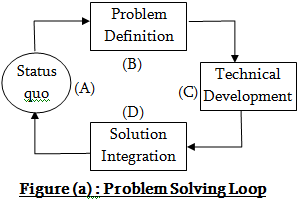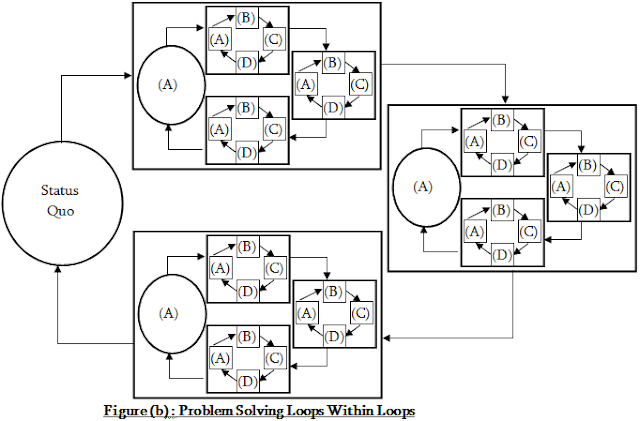Problem Solving Loop : All software development can be characterized as a problem solving loop in which four distinct stages are encountered: status quo, problem definition, technical development, and solution integration.
Status quo represents the current state of affairs, problem definition identifies the specific problem to be solved, technical development solves the problem through the application of some technology and solution integration delivers the results such as documents, programs, data, new business function, new product etc to those who requested the solution in the first place. The generic software engineering phases and steps easily map into these stages.
This problem solving loop applies to software engineering work at many different levels of resolution. It can be used at the macro level when the entire application is considered, at a mid-level when program components are being engineered, and even at the line of code level. Therefore, a fractal representation can be used to provide an idealized view of process. In Figure (b), each stage in the problem solving loop contains an identical problem solving loop, which contains still another problem solving loop and this continues to some rational boundary; for software, a line of code.
The simplified view of figure (b) leads to a very important idea: regardless of the process model that is chosen for a software project, all of the stages—status quo, problem definition, technical development, and solution integration—coexist simultaneously at some level of detail.

